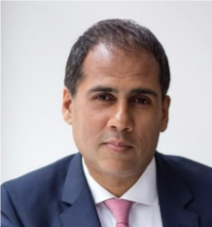Dealmaker’s Diary: How to Prepare for Black Swan Events
Alpesh Patel|November 21, 2024

What keeps a seasoned investor up at night?
Black swan events – those rare but devastating market disruptors that no one sees coming.
But guess what… these outliers happen more frequently than the math suggests, catching even the smartest investors off guard.
From quantum computing threats that could crack every password within 12 months to hidden systemic risks in our financial system, today I’m going to share what actually worries me… versus what AI thinks should worry us.
And I’ll explain why I don’t go all-in on seemingly unstoppable stocks like Nvidia or Microsoft.
Join me for an insider’s view on managing black swan risks, including insights from my connections to British intelligence and venture capital firms backed by the CIA.
This the kind of research my clients pay thousands for… but you get it for FREE as a Total Wealth subscriber.
Click on the image below to dive in.
TRANSCRIPT
Hello, friends. A subscriber asked a fantastic question, which is the subject of my Dealmaker’s Diary today.
And it’s a question you may wonder about too… how much do we worry about black swan events?
Black swan events are those highly improbable events, but which could have an enormous impact.
They’re named after Australian black swans. It was thought until Australia was discovered – I say discovered, but obviously the people living there already knew that they were there, but discovered by the West, let’s put it that way – that there were only white swans in the world because nobody had ever seen anything other than a white swan.
And therefore, when a black swan was discovered, it was thought to be an exceptional event, one which people might not even have thought could exist or could ever happen… an outlier.
So that’s where the term comes from. Let me explain, first of all, what this means in financial terms as I go through which are the black swan events.
Here’s a statistical analysis of the S&P 500.

If you ask a mathematician to plot the movements of the S&P 500, and then you say to them, now assume this moves in a normal distribution curve, a bell curve, in other words, then they’ll say that the return histogram suggests given the last five years’ worth of data of the S&P 500, that this is how it will look over the next 250 days.
It’s a mathematical projection. It’s not a guarantee, and it’s very much based on the last five years.
Now you will have noticed a couple of assumptions and problems with this. But before I get on to those, let me just explain this, and it’ll also explain to you why hedge funds collapse, the financial crisis is not foreseen, why experts are overconfident, and why we hadn’t prepared for COVID, for instance. This is very important.
But it also will explain why people buy insurance. And I’ll explain all of these things. It’s a subject that I used to lecture on a little bit when I was a visiting fellow at Oxford University. So I’m going to give you a little economics tutorial, but I’m going to keep it really simple and fascinating.
So they took the math of the five years’ worth of distributions of the S&P. And if you want to simplify that math, just think of throwing a dice and taking that data and then projecting it forward. It’d be pretty easy math. Somebody projecting that forward is, well, there’s a one-sixth chance of the number one, a one-sixth chance of the number two, and one-sixth chance of the number and so on.
Well, what they’ve done with this chart is they’ve said, over the next 250 days, these are the probabilities based upon the historical data over the last five years.
A 20% gain in the S&P has a pretty high probability because each time that’s likely the bar goes quite high. A 76% gain highly improbable, but there’s a very small probability. Now this is the bit we’re really worried about. OK. Minus 23% drop. There’s a pretty small probability. But it could happen.
Now why does this lead to so many problems in real life? Well, first of all, the past is not a guarantee of the future, and the past five years did not have a black swan event.
And the fact that one could occur in the future means that this model breaks down somewhat. So you might say, well, obviously, then nobody uses this model. Well, actually, I’m afraid in investment floors around the world, they do.
What they do is they allow for the fact that such distributions have what’s called fat tails. See that tail? That’s a tail, and that’s a tail. So they assume that these improbable events are going to happen more frequently than the conventional mathematical model implies. And, of course, that’s because those outlying events do indeed happen more often than the model implies. Put another way, the probability of a 1987 type crash until it happened was supposed to happen once every thousand odd years or so, given that there’d been a 1929 crash.
The fact that it happened so frequently to the 1980s – so close in proximity to the 1929 crash – suggested that we hadn’t factored in the fat tails. In other words, that these extreme events happen more frequently than we realized.
So what the mathematicians did, they got a bit clever and they said, well, let’s make these tails a bit fatter and just add a bit more probability to those. And that’s perfectly fine. It allows for it, but it doesn’t remove it because, obviously, those things are still going to happen. All it does when we’re investing or planning is tell us, well, we better have a little bit less capital in there or some kind of insurance policy like an options hedge, or have some basically insurance, some kind of protection against those happening. Now putting less money in is one insurance against collapse. If you think about the financial crisis, people did not think the housing market would collapse.
OK? That’s one of the reasons. You think about the big hedge fund collapses like Long Term Capital Management… they didn’t think the Russian bond market was going to do what it did. So the basic problem comes down to basically the bell curve and the assumptions within it.
In other words, black swan events happen more frequently than humans realize, which is why experts keep messing things up, and they get a bit too confident.
Imagine if I said to you and you trusted me, oh, actually, the probability of this minus 23% drop is zero or 0.001. You and I sit around the table. We get very confident. And on that basis, you decide to mortgage your home, borrow a load of money, and go all in that the market is in actual fact just going to rise.
Of course, the danger is it doesn’t, and you lose all your money. That, put in simple terms, is the problem. So what’s the lessons from all of this? Well, the lesson is those extreme events are the reason why I don’t go all in every single year on ten times leverage of NVIDIA or Microsoft or Apple or Amazon because I’m afraid about that happening.
And if that happens, there’s a high probability my wife will divorce me.
So the consequences are more than financial.
OK?
And a lot of humans gauge these kinds of things. We often mess things up when we misjudge these probabilities at the extremes.
So moving on from mathematics and economics, and you’ve done this well. You’ve done very well to survive this far. Let’s get into what’s the probability of some of the most extreme events likely to happen. So who better to ask and who better to judge all of this given that it might be a cause of one or two of these than AI?

I think these probabilities are out of whack, but they worried me because these are the probabilities that came from AI.
OK. Don’t read too much into it. I don’t want you all digging tunnels and building nuclear bunkers… buy having seen what’s come out of the Kremlin, I don’t want to talk you out of it either.
So let’s go through each one of these and my estimation. The problem with human estimation in all of these is, of course, by their very nature, we have a cognitive bias against thinking they’re going to happen because that’s the nature of Black Swan by definition.
You know, we get overconfident that that’s not going to happen. So we’ve got to allow for that as well.
Nassim Taleb, who wrote a book on Black Swan events and a book called “Fooled by Randomness,” actually created a fund which just waits for these events. So year after year, he’s just wrong. He’s basically buying out of the money put options for those who are into options. And then one year in ten, he’s right and makes a killing. Ninety percent wrong, 10% right. The 10% win is huge.
OK. The insurance industry relies on the fact that your perception and theirs are different. They’ve got the data you haven’t. You’ve got feelings and want peace of mind. You keep paying them premiums. Once in ten years, they’ve got to pay you out. However, they’ve worked it out that when they pay you out once in ten years, they’re still up.
OK? For nine years, you’re losing money.
If you consider having insurance without having to make a claim losing money, you’re losing money nine years out of 10, maybe more years than that. But, emotionally, you feel more comfortable. What are you buying? You’re not buying just economic peace of mind.
You’re actually buying peace of mind, full stop. Right. So escalation of conflicts like Taiwan, China, Middle East, Ukraine could disrupt that. This could happen.

Impact semiconductor shortage, oil price spikes, market instability. AI thinks 20% probability.
The problem with all of this is, well, how are you going to protect against it, Alpesh? Well, let me put it this way. I’m not going to just hold cash because then I’m going to miss the gains.
OK? I’ll be sitting back and waiting for a market fall.
And I don’t think that probability is right. If I did, then maybe I’d change my mind. You might say, well, why don’t you buy some put options on the index? I could. I could buy some out of the money put options which would spike up in value. I just don’t want to pay insurance premiums.
So at the moment, what I do is I just work on the basis that I’ll just keep a close eye on the market, and I won’t go completely all in. I won’t go heavily leveraged.
OK. Key risk, high interest rates and risky asset exposure increase probability of a systemic financial crisis. You tell me, does it feel like it at the moment? Nope.

Chain reaction across banks recently. Now this is more what basically was happening during the financial crisis in terms. It doesn’t look unless AI knows something I don’t. I could have probed it further and said, what’s your thinking here?
How did you come to this? Where does this start? Draw me a scenario. And I could scenario plan for it.
It’s not what my hedge fund does. If I wanted to create one, that’s how I do it. I’d scenario plan for each situation and then go and raise capital from people who are scared senseless.
Dollar denominated debt and inflationary pressures strain nations like Argentina and Turkey. Could well happen. Probably will. Argentina, Italy, Turkey always have financial crises coming up regularly. Defaults could destabilize the global credit market. That’s the problem. Defaults won’t stabilize and spread contagion.

OK. So I don’t see that one coming.
Accelerated adoption could lead to mass unemployment sectors like logistics, customer service, financial services, social unrest, reduced consumer spending, and political instability. Not yet. Not this year, I don’t think, in the next 12 months.
Increasing frequency of extreme weather events such as wildfires, hurricanes. Well, we’re seeing some of this already, the worst parts of the bible, basically.
Impact: destruction of global supply chain, spikes in food prices, economic stability, 30%.

Well, Spain’s being flooded, but they’re seeming to cope. The wealthy nations cope. The poorer nations don’t cause an economic impact on the rest of the world. So you sort of got a natural insurance policy, which is already built in similarly with this. The insurance policy is already in the system.
OK? The World Bank monitors all of this. It’s in the system.
The Fed monitors this. It’s in the system. What so why did the crisis happen before?
Well, the financial crisis, most of all, because the monitoring wasn’t going on. So you got to ask yourself, where’s the monitoring not going on? What are we not monitoring?
OK.
Then you’ve got this. Rising geopolitical tension increases the likelihood of state sponsored or rogue cyber attacks. Now my wife was – I can disclose this. It’s not an official secret. She works for the British government. She was at an AUKUS, that’s Australia, United States, United Kingdom, event on cybersecurity, again, without disclosing anything confidential, obviously.
This is more of a worry than people realize it should be. OK? So I’d put, you know, 15%. I’m not so sure. But passive financial systems, energy grids, and supply chains cause widespread disruption. Now to some extent, we’ve seen little bits of this already happening with shipping lanes and so on.
World War III has already begun, and your main threat is actually not Russia so much. That’s physical. But in the virtual world, it’s China, and it’s already going on. We’re able to defend at the moment against them, but this is the one which I think is the one to worry about the most.
Supply shocks in energy and agriculture, we think like a second wave of inflation. We’re getting some supply shocks in the UK on agriculture because of tax rises, but we’re not seeing this come in. And for the people monitoring it, we’re still not seeing this causing a problem – not causing certainly, it doesn’t seem to be causing stagnation in Europe, the UK, or the US. Rising interest rates, well, they’re being held on.
Sharp decline in consumer spending, not seeing it. There’s some increase in borrowing. It’s managing it. So we’re not seeing that recession re and this is, again, not causing much concern.
Misuse or malfunction of advanced AI could cause economic disruptions, including misinformation, security breaches, actual market volatility.
Yeah. Possibly.
I don’t know enough. Then again, I didn’t know enough about this one either for it to happen. And there were some people screaming blue murder that this is going to be the one, emergency of highly transmittable deadly viruses. So in health care is what we’ve learned.
Yeah. This is a problem. The structure of global trade and consumer confidence have been done really well. We saw this was a problem during COVID. Before COVID, I would have said, we’ve got vaccines. We’ll be fine. Governments will protect us.
I think this can happen again, and that’s also a problem. So cyber and this one, I’m going to put pretty high up. Growing efforts by countries to de-dollarize trade, because China’s dollars’ dominance, disruption of global financial systems not seeing it either. The Chinese just did a bond – they borrowed money on the markets.
They launched this not in Hong Kong as they normally do, but in Saudi Arabia, but it was all dollar denominated.
Dollar denominated. The dollar is the currency that the world trusts more than any other. OK? Even the Chinese. Aggressive regulation targeting tech monopolies, financial systems, good stuff and innovation disrupt markets.
You tell me, do you see that? No. Like I said, it’s the things that you see which will be wrong. So having highlighted those, the issue really comes down to, well, what are you doing about it, Alpesh?
Well, vigilance. And I guess with the financial crisis as well, you know, the fact that I report to you, the fact that I speak to people from the major banks, and you might say, wait a minute. The financial crisis, that wouldn’t have helped you much. Yeah.
But we made a lot of money in the financial crisis because we’re able to short the market as it was falling.
So do not think that it’s a one-way bet that we’re always looking for.
Movements actually, the worst thing that stock market could do is not that it would fall. There’s money to be made from that. The worst thing it could do is flatline and just go sideways in every security. What’s the problem of that happening?
So, yeah, that’s where we are at the moment. I’m not particularly worried because I am vigilant and have liquidity. And the kinds of things that I tell you on my GVI newsletter are the ones where you can click a button and get out, and we’re watching those things for you as well. OK? So what have I mentioned? Well, the United States, I have, you know, pockets of information that’s beat up not just the banks, the hedge funds and the stuff that crosses my desk.
My wife and I both work with the UK government on global tech. So we look at what’s happening where we see – I’ll give you a little cheat.
The people who have the most vested interest are the entrepreneurs because they’ve got the most money they can make. So we look at the early stage scale-ups to see what are the threats they’re fighting against.
I’ll give you an example. You know, if somebody like In-Q-Tel, which is a CIA-backed venture capital fund, is funding into a particular area, then we get an idea that, OK, that’s a threat that they’re countering. So that’s a threat and a worry we should be looking at more closely. For instance, one of the great branches of doing things in this in the markets is that you really get an idea of what’s going on. Now that doesn’t mean I can foresee that there’s going to be a new virus released. What I’m saying is I can see where we’re looking to counter threats and where there are gaps. And one of the gaps which is not particularly mentioned here, and it sort of should be within cybersecurity, is if you get quantum computing that can crack passwords, there is a probability that within the next 12 months, all passwords can be decrypted.
There are no secrets because quantum computers would be able to decrypt those. Now there are cybersecurity companies working to counter that. They’re scale-ups. They’re not your Microsofts and all the rest of it necessarily. And so we’d keep an eye on this and see what’s going on in the world. And if at any point something flags up as more of a concern, I would let you know.
It might be a concern or falls or it might be, OK, this is an area where we want to invest more in. And so for instance, defense and cybersecurity, I will be where I can find companies for you which are undervalued, high growth. I will look at that.
Speaking of intelligence, I’m proud to say somebody I know, Tulsi Gabbard, has been – this is the photo. I must put it up on screen.
If you’ve been following these things, she has been appointed director of national intelligence, which means she reports to the president and the heads of the NSA, the CIA, and the FBI report to her. There’s a lovely picture of myself and Tulsi, and I’ll go into more detail how I know her and all the rest of it in due course.
But, yes, I was really pleased to see that she’s got that role in the government.
Thank you all very much. I hope you enjoyed that, found it fascinating, interesting, and we must do more of these. Thank you.

Alpesh Patel
Alpesh Patel is an award-winning hedge fund and private equity fund manager, international best-selling author, entrepreneur and Dealmaker. He is the Founder and CEO of Praefinium Partners and is a Financial Times Top FTSE 100 forecaster. As a senior-most Dealmaker in the U.K.’s Department for International Trade, he is part of a team that has helped deliver $1 billion of investment to the U.K. since 2005 . He’s also a former Council Member of the 100-year-old Chatham House, the foreign affairs think-tank, whose patron is Queen Elizabeth. For his services to the U.K. economy, Alpesh received the Order of the British Empire (OBE) from the Queen in 2020. As a recognized authority on fintech, online trading and venture capital, his past and current client list includes American Express, Merrill Lynch HSBC, Charles Schwab, Goldman Sachs, Barclays, TD Bank, NYSE Life… and more.



